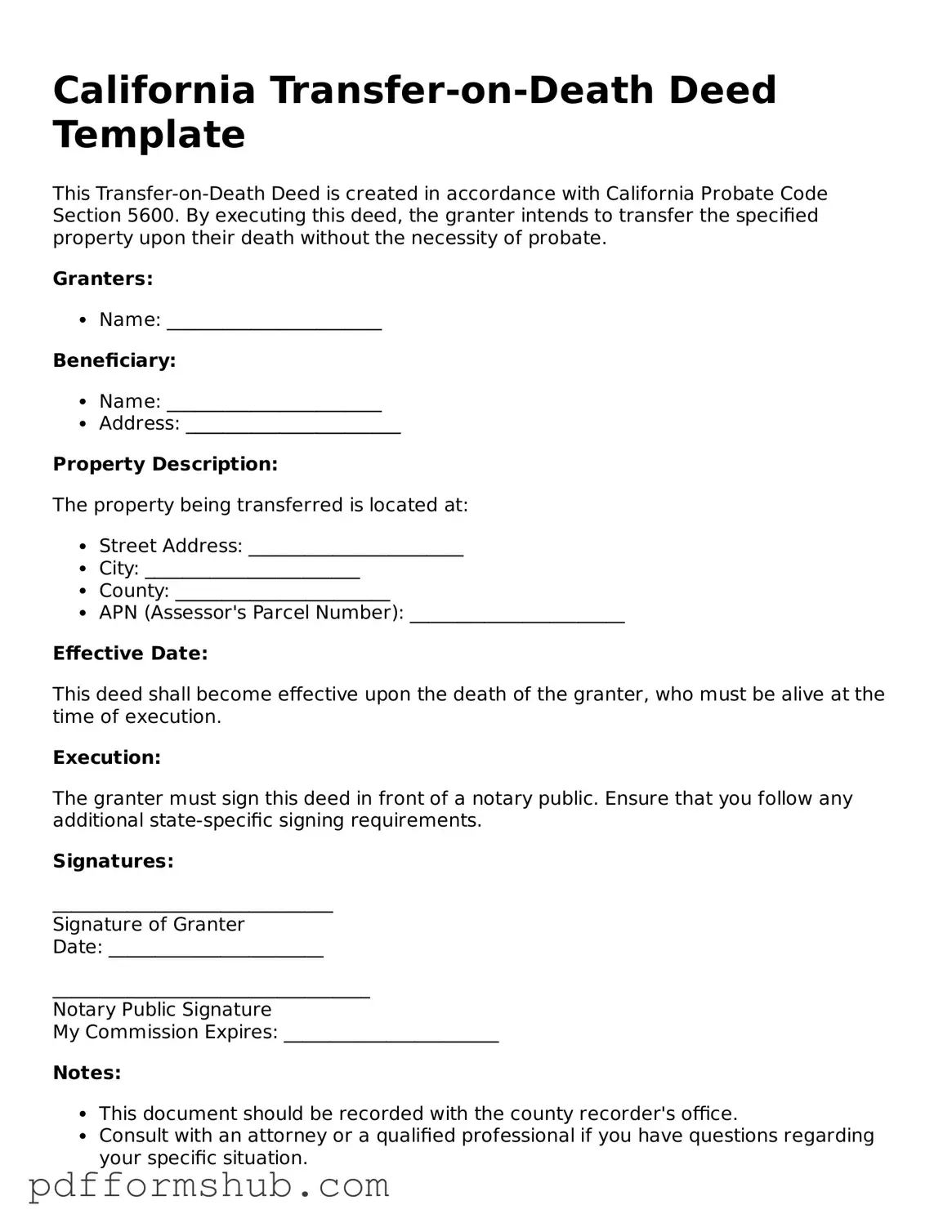Attorney-Verified Transfer-on-Death Deed Form for California State
The California Transfer-on-Death Deed form allows property owners to designate a beneficiary who will receive their real estate upon the owner's death, bypassing the probate process. This legal tool provides a straightforward method for transferring property, ensuring that the owner's wishes are honored without unnecessary delays. Understanding the implications and requirements of this form is crucial for effective estate planning.
Take the first step in securing your property transfer by filling out the form below.
Customize Form
